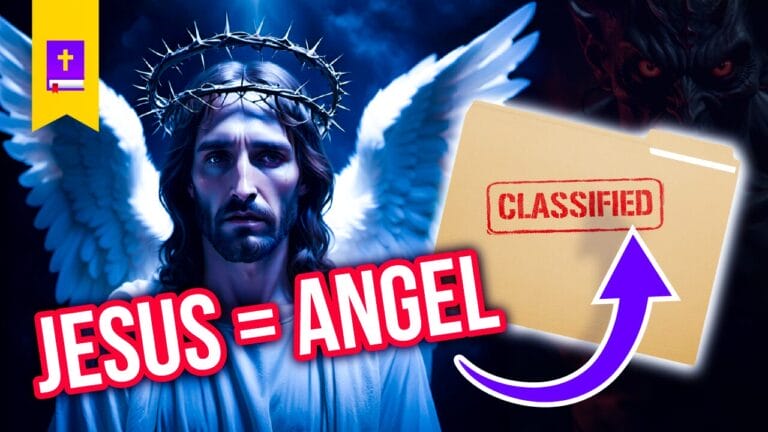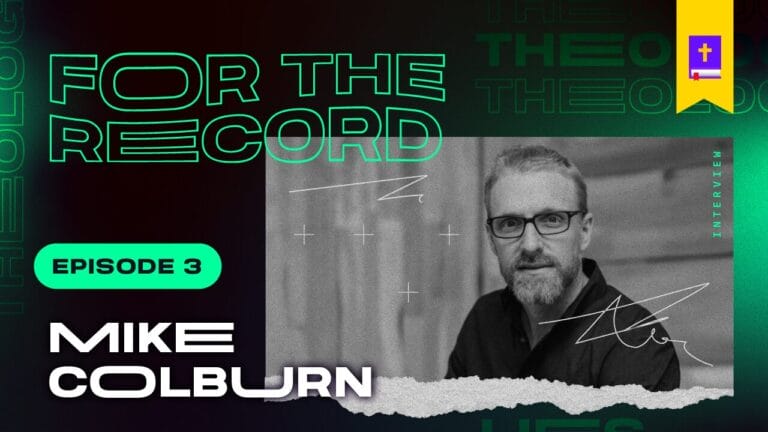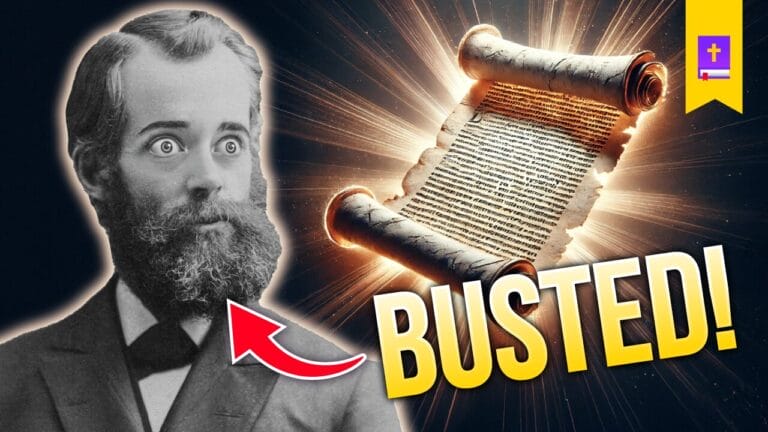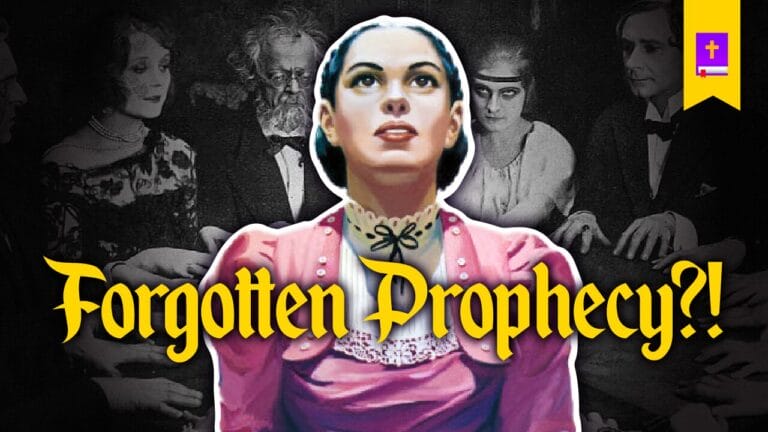Adventist Teaching: Satan
Biblical Teaching: Jesus
In Seventh-Day Adventist theology, no sins were cancelled at the cross. That’s only where the atoning sacrifice took place. No sins would be blotted out until the start of the Investigative Judgment which they claim began in 1844, in a sanctuary building in Heaven. In this work of investigation, Jesus is looking over the life records of all of those who have professed faith in Jesus from Adam and Eve to the present day to see if their life matches up with their profession. If anyone has any sins unconfessed on their record, their name will be blotted out of the Book of Life.
Those in this judgment who are found worthy of Christ’s atoning benefits and have confessed every single one of their sins, arriving at a sinlessly perfect state, will have their sins blotted out by the removal of them from the Sanctuary and transferred onto Satan who they teach is the antitypical Day of Atonement scapegoat found in Leviticus 16. This is because they teach that Satan is ultimately responsible for sin, including the cause of every human sin, so he must suffer the final penalty for sin.
It’s important to note that when the SDA Church uses the word “atonement” they mean something very different than what Christians mean. They are referring to their novel doctrine of the Sanctuary and the Investigative Judgment—as can be seen in Salvation: Contours of Adventist Soteriology, a scholastic work by SDA scholarship:
One of the most debated topics of Christian theology is expressed in these questions: Why the cross? What really happened at the cross? The answers to these questions have been widely debated under the general heading of the atonement. But when Seventh-Day Adventists (SDA) approach the matter of atonement, an immediate dilemma is perceived. When Adventists talk about atonement, they refer specifically to what Jesus is doing now in the heavenly sanctuary. On the other hand, when scholars outside the Seventh-Day Adventist Church discuss the atonement, they refer specifically to the cross of Jesus Christ and what God was doing there.
JON PAULIEN, SALVATION: CONTOURS OF ADVENTIST SOTERIOLOGY, CHAPTER 10, PG. 189
Leviticus 16:10 states that the scapegoat had a role in the atonement which would mean the Adventist Church is including Satan in the work of expiating sin. In their 28 Fundamental Beliefs book they include this in the footnotes of the chapter on this subject:
If Azazel represents Satan, how can scripture connect him with the atonement? As the high priest, after having cleansed the sanctuary, placed the sins on Azazel, who was forever removed from God’s people, so Christ, after having cleansed the heavenly sanctuary, will place the confessed and forgiven sins of His people on Satan, who will then be forever removed from the saved. [Begin SDA Bible Commentary] “How fitting that the closing act of the drama of God’s dealings with sin should be a returning upon the head of Satan of all the sin and guilt that, issuing from him originally, once brought such tragedy to the lives of those now freed of sin by Christ’s atoning blood. Thus the cycle is completed, the drama ended. Only when Satan, the instigator of all sin, is finally removed can it truly be said that sin is forever blotted out of God’s universe. In this accommodated sense we may understand that the scapegoat has a part in the ‘atonement’ (Leviticus 16:10). With the righteous saved, the wicked ‘cut off’, and Satan no more, then, not till then, will the universe be in a state of perfect harmony as it was originally before sin entered.”
Seventh-Day Adventists Believe, Ch. 24: The Investigative Judgment and Heavenly Sanctuary, pg. 369
The Bible nowhere teaches such a thing. Leviticus nowhere states that the scapegoat represented responsibility—the necessary component for the Adventist theory to be true. This is coming strictly from Ellen G. White. The scapegoat represented expiation—the removal of sin from the people. Two goats were necessary for this single sin offering (Leviticus 16:5) because a single goat could not both pay the penalty for sin (death) and also remove the sins from the people. A dead goat could not remove the sins. Jesus Christ—however—can because He is much greater than an animal. He is the antitypical fulfillment of all of the laws sacrifices and offerings (the burnt offering, sin offering, guilt offering, freewill offering, etc.) of which the scapegoat was only a part. All animals used in the laws sacrifices and offerings had to be blemish free (Leviticus 22:20-21) which would include the scapegoat. Satan most assuredly does not fit this requirement, but Jesus does.
Just like the scapegoat functioned as taking the sins away from the people, so did Jesus Christ. He is the Lamb of God that takes away the sins of the world (John 1:29) by bearing our sins, just like the scapegoat, in His body on the cross (1 Peter 2:24), removing them from us and paying the penalty for them. Jesus already put sin away by the sacrifice of Himself at the cross (Hebrews 9:26) and is seated on His throne in Heaven—ruling and reigning as a Priest King—while all of His enemies are made His footstool (Hebrews 10:12-13). Sin isn’t transferred to Heaven to be stored and investigated, then transferred again to Satan. A central promise of the New Covenant is that God remembers the sins of those in the covenant no more (Jeremiah 31:34, Hebrews 8:12). This is because Jesus has already done the work of removing them from us.
Professor L. Michael Morales, in his book Who Shall Ascend the Mountain of the Lord? explains this nicely:
The scapegoat’s role should be understood in conjunction with that of the goat that is sacrificed. As an elimination rite the azazel goat ritual is often probed in isolation, from a redactional and/or comparative religion approach. Within the context of Leviticus 16, however, the rite is fully integrated as part of one complete ceremony, associated particularly with the young goat that is sacrificed. For example, while two rams are also used on the Day of Atonement, as ascension offerings for the priestly house and for Israel respectively, yet these two animals are not brought together in the same fashion as are the two goats.
The text is quite careful to portray the goats as a set: the high priest takes them both from the congregation of Israel, presents them both together before YHWH at the door of the tent of meeting, and then casts lots for them both. The instructions for the high priest in Leviticus 16:5, moreover, refer to both goats together as a single purification offering.
To be sure, the expulsion rite is not an offering in the technical sense. Nevertheless, in removing sin, the scapegoat’s function fits the precise significance of ḥaṭṭā’āṯ (sin) as ‘purification’, and, combined with the blood manipulation of the sacrificed goat, completes the picture of atonement. Indeed there is historical precedent for understanding these goats to be identical in appearance, and chosen expressly because of this likeness, as if it were one goat accomplishing two different aspects of atonement—purification and expiation, cleansing from sin’s pollution and the removal of sin’s guilt.
L. Michael Morales, Who Will Ascend the Mountain of the Lord: A Biblical Theology of the Book of Leviticus, pg. 178-9
By making Satan the scapegoat, the Adventist Church is crediting some of Jesus’s accomplished redemptive work to Satan. They are making Satan a co-redeemer with Christ because the scapegoat was necessary for sins to be taken away from the people which is a necessary part of redemption. They obviously will deny this, but that’s the logical end of their position. Paying the penalty of death alone was not sufficient. The sins had to also be removed from the people. If this is ascribed to Satan, it makes Satan the final sin bearer and expiator of believers sins which is utter blasphemy.
Ironically, Ellen G. White contradicted herself on this topic, which is the SDA Church’s “stamp of approval” from God that they are correct on this. After writing in multiple places that Satan is the scapegoat, she also wrote that Jesus is the scapegoat.
The Adventist Church has sought to defend this by saying the quote regarding Jesus as the scapegoat was never officially published. Ellen G. White never had that standard for herself, though, and claimed to never write a single sentence of heresy and that “whatever contradicts God’s Word, we can be sure proceeds from Satan.” We’ll let you connect the dots.










